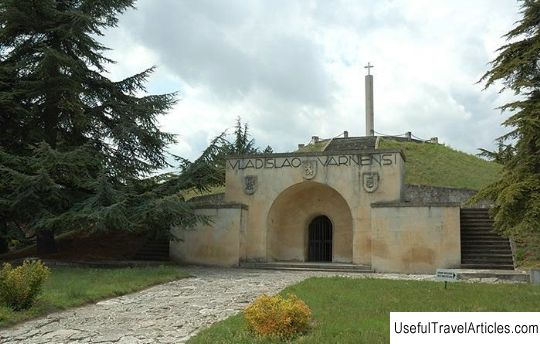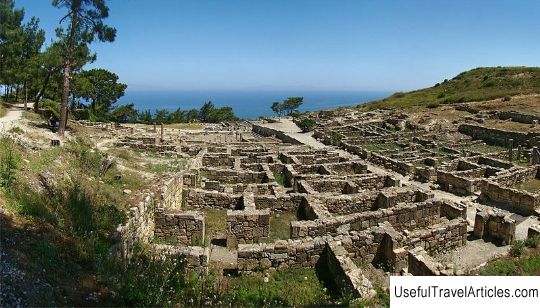Park-Museum of Vladislav Varnenchik description and photos - Bulgaria: Varna
Rating: 7,8/10 (200 votes) 
Vladislav Varnenchik Park-Museum description and photos - Bulgaria: Varna. Detailed information about the attraction. Description, photos and a map showing the nearest significant objects. Photo and descriptionThe park-museum of Vladislav Varnenchik (Vladislav III Yagailo) is located in the western part of the Bulgarian city of Varna. The memorial museum complex is located where the Polish-Hungarian king and national hero Vladislav Varnenchik died - in the middle of a unique park of 30 hectares. The park-museum is dedicated to the battle of Varna in 1444. On November 10, fighters of a mixed Christian army - Bulgarians, Poles, Hungarians, Czechs, Romanians, Croats, Bosnians, Russians, as well as papal knights - tried to stop the Ottoman invasion of Europe. Thousands of defenders were killed in this battle. The inhabitants of Bulgaria, even during the Tatar slavery, at the site of the bloody battle and death of Vladislav Varnenchik, near two ancient Thracian graves, erected wood crosses. In 1924, the park was created, and in 1935 the mausoleum of Vladislav III Yagailo was erected. The mausoleum contains a stone sarcophagus, created by the sculptor and painter Anton Madeisky - an exact copy of the original bronze one, which is located in Wawel in Krakow. The body was not buried in the royal mausoleum, since, according to historical Turkish records, the head of Vladislav was taken to the Muslim center of Bursa, where she was planted on a spear and used in a festive procession in honor of the victory at Varna. As for the body, it is believed that it was thrown into Lake Varna along with the bodies of other victims. There is a legend that King Vladislav survived and, hiding from the shame of defeat, went to the island of Salamanca, where he became a hermit. Another legend says that he took refuge in Portuguese Madeira, received a knighthood, married and had two children. In honor of the 520th anniversary of the battle in 1964, the park was rebuilt, a sacrificial corner was opened, a historical museum was built, which contains a rich database of documentary materials about the battle of Varna. The exposition of the museum presents the only knightly armor of that era in the country. In addition, visitors have the opportunity to see 15th century weapons and equipment found on the battlefield; paintings, prints, sculptures, as well as other works of art dedicated to the Varna battle; banners, cards, emblems, various models and layouts. A special hall of the museum is dedicated to the hero-commander Jan Hunyadi. The park-museum is a branch of the military history museum in Sofia.      We also recommend reading Classe Pinewood description and photos - Italy: Ravenna Topic: Park-Museum of Vladislav Varnenchik description and photos - Bulgaria: Varna. |




